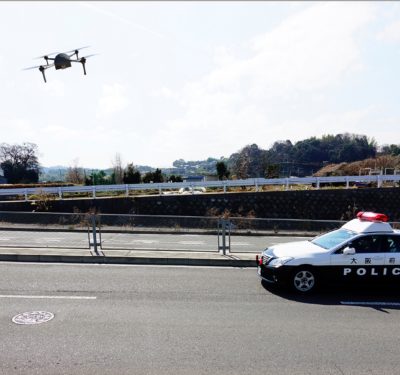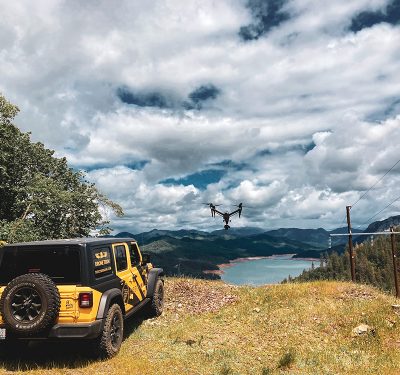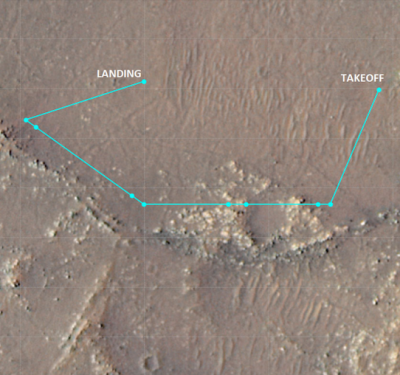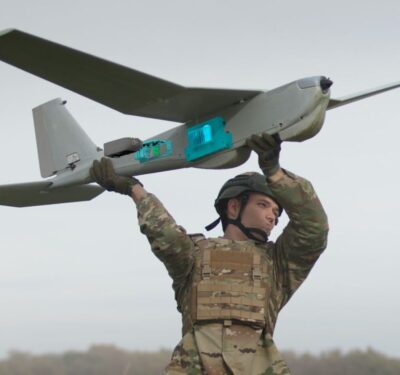
Photo Courtesy of Josue Isai Ramos-Figueroa via Unsplash.
Two leading organizations for airports and unmanned aircraft are teaming up to help officials react more quickly and effectively when a drone is operating too close to the airspace set aside for piloted aircraft.
The Airports Council International-North America (ACI-NA) and the Association for Unmanned Vehicles Systems International (AUVIS) are launching a task force to refine procedures and develop policy recommendations to deal with incursions by unmanned aircraft systems (UAS).
Over the last six months drones have repeatedly disrupted airport operations causing flights to be halted or diverted. On April 29 three aircraft bound for Gatwick, Britain’s second busiest airport, were temporarily diverted to Stansted airport, ultimately landing at Gatwick 90 minutes late. This follows a major disruption in December when incursions forced Gatwick to be shut down for 33 hours during the week before Christmas. Some 140,000 passengers were impacted by the closing which caused roughly 1,000 flights to be delayed or cancelled between December 19 and 21. On the other side of the Atlantic, air traffic to and from Newark Liberty International Airport in New Jersey was shut down in January after two unmanned aircraft were spotted nearby.
Related Reading: Wake Up Call: Gatwick
“UAS interfering with manned aviation is a serious issue, and it requires serious solutions. That is why we are bringing together the best and brightest minds to recommend a plan to keep our skies safe for the flying public,” said Brian Wynne, president and CEO of AUVSI in a statement during an April 30 news conference. “While UAS hold tremendous societal and economic benefits, occasional bad actors threaten to undermine the great progress we have made and even put responsible, legal UAS operations in a negative light.”
The task force, which will kick off during the May 2 keynote at XPONENTIAL 2019 will tap experts to help it discuss and refine procedural practices for airports, law enforcement and other stakeholders to respond to future UAS incidents. The group will also develop a longer-term policy framework informed by emerging technologies and initial efforts to deter incursions. The goal is for this work to lead to and inform future conversations about UAS mitigation at other facilities, such as national landmarks, stadiums, prisons and military bases.
“One of ACI-NA’s highest priorities is ensuring unauthorized and unsafe drone operations do not adversely affect the safety or security of US and Canadian airports,” said Burke, in a statement. “With more and more drones flying in the airspace, we have found ourselves in a new situation with no clear playbook. By bringing together this exceptional group of experts, we are hopeful we can make significant progress in developing best practices that will help airports respond better.”
The task force will be comprised of former government officials, security professionals and aviation executives, including:
Michael Huerta, former administrator, Federal Aviation Administration (Co-Chair)
Deborah Flint, CEO, Los Angeles World Airports (Co-Chair)
Scott Brockman, president and CEO, Memphis-Shelby County Airport Authority
Rich Davis, former managing director of Global Security, United Airlines
Trish Gilbert, executive vice president, National Air Traffic Controllers Association
Cathy Lanier, senior vice president of security, National Football League
Huntley A. Lawrence, director of aviation, Port Authority of New York and New Jersey
Chad Makovsky, EVP of operations, Dallas Fort Worth International Airport
Marily Mora, president/CEO of the Reno Tahoe Airport Authority (RTAA)
John Pistole, former administrator, Transportation Security Administration, and former deputy director, Federal Bureau of Investigation
Jamie Rhee, commissioner, Chicago Department of Aviation (CDA)
“The industry is working with our government partners on remote identification and tracking standards, but we understand that more needs to be done and at faster pace than the regulatory process allows,” Wynne said. “That’s why the industry is stepping up to explore near-term solutions before remote ID regulations are finalized and published.






